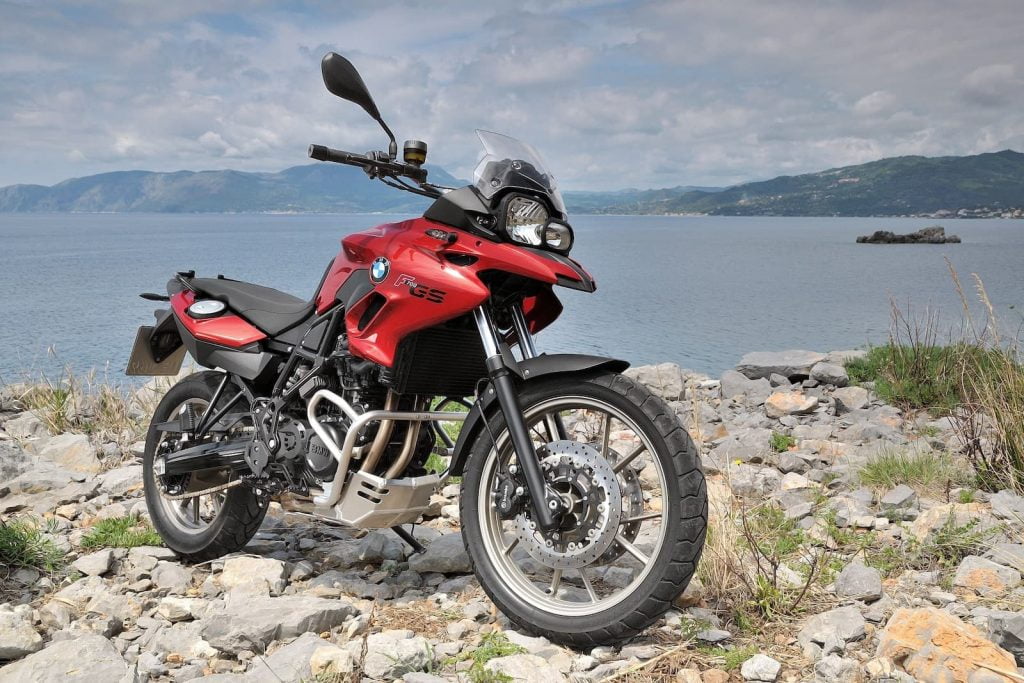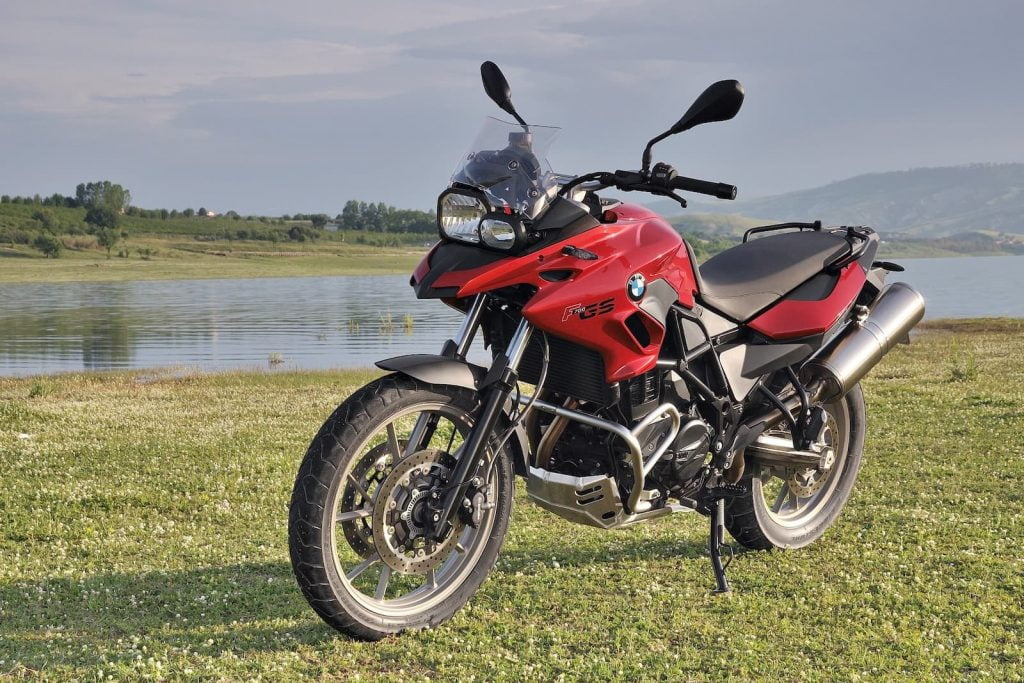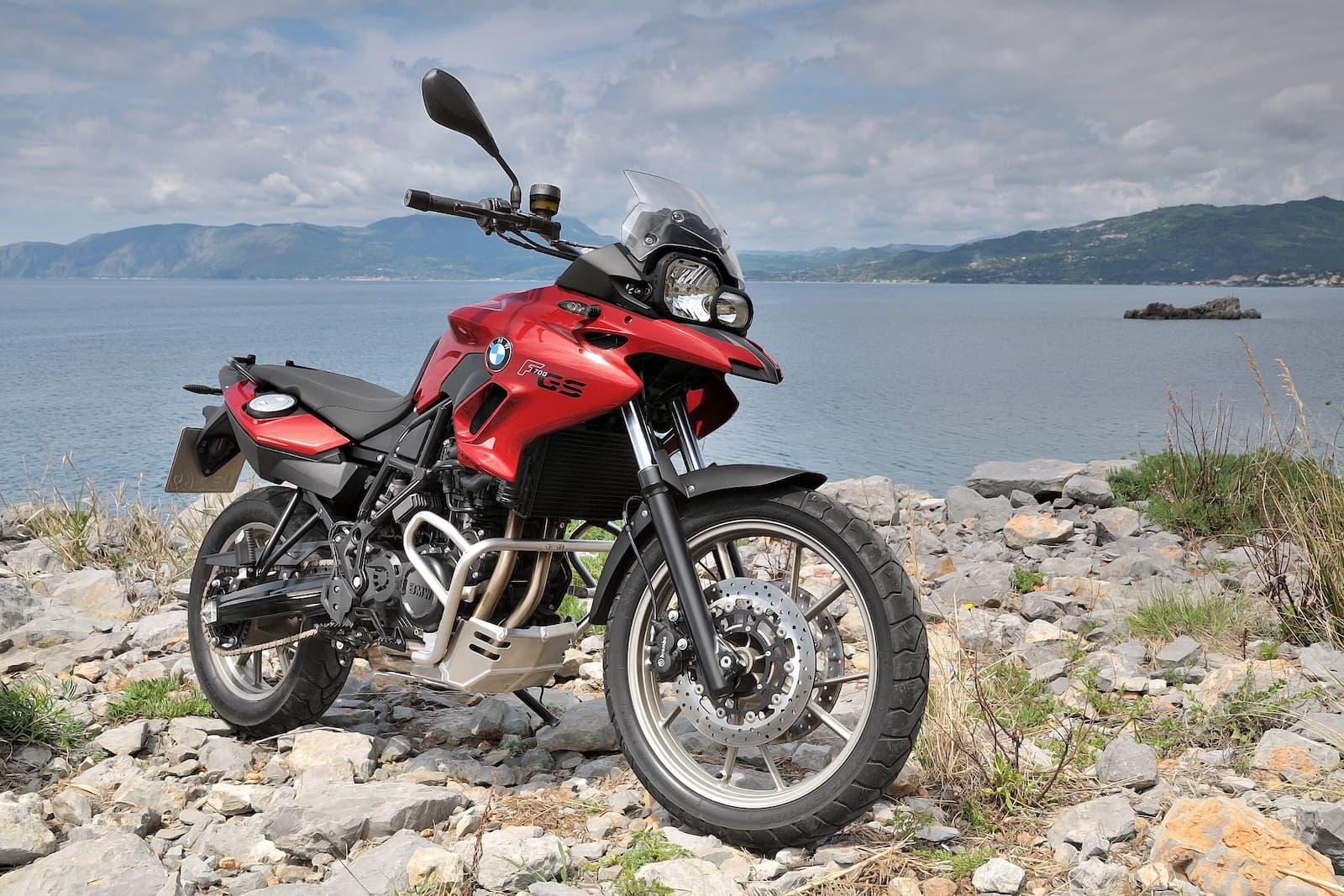BMW F 700 GS (800cc Twin, 2012-2018) Maintenance Schedule and Service Intervals
This is the maintenance schedule and service intervals for the BMW F 700 GS, the update to the F 650 GS (twin). The BMW F 700 GS was launched in mid 2012.
Like its predecessor, the F 700 GS is the smaller, road-going sibling to the bigger, more adventure-focused F 800 GS.
The BMW F 700 GS is still powered by a 798cc parallel twin with a 360 degree offset, giving the twin a lumpy idle that’s reminiscent of the bigger boxer engines, as well as (according to BMW) giving it a “unique” power characteristic.
In the F 700 GS, the engine makes 55 kW (75 hp) of peak power at 7,300 rpm, up from the 52 kW (71 hp) @ 7,000 rpm in the F 650 GS, but still down from the full-power F 800 GS.
The BMW F 700 GS is higher spec and power than the outgoing F 650 GS, but still lower spec than the F 800 GS. It still is lower weight, shorter, and cheaper.
Like the F 800 GS, the F 700 GS was updated in Jul 2016 with throttle by wire. However, the maintenance schedule is the same other than lubing the throttle cable.
In 2018-19, the F 700 GS was replaced with the higher-spec BMW F 750 GS, which received an all-new larger 853 cc motor.
This site has links for things like oil and spark plugs from which we earn a commission (which unfortunately nobody can save, not even us). If you appreciate this work, then please use those links. Thanks!
BMW F 700 GS Service Intervals
Overall, the BMW F 700 GS has 6 000 mile or 10 000 km service intervals.
At every service, change the oil and filter, and do a once-over of the bike. See the service checklist below.
The major valve service for the BMW F 700 GS is every 12 000 miles or 20 000 km. At that point, also change the spark plugs, and the air filter insert.
Regularly maintain the chain, and keep the brake fluid and coolant fresh.
What you need to service the BMW F 700 GS
To service your BMW F 700 GS, you need the following consumable parts. There’s a lot in common with the BMW F 800 GS but some are different (I mean there’s only one brake rotor…).
| Part | BMW F 700 GS part spec |
|---|---|
| Oil | BMW recommends using BMW Advantec Pro 15W-50, their own brand, but you can use other 15W-50 synthetic oils of high quality. |
| Oil filter | The standard oil filter is BMW part 11 42 8 409 567, which is equivalent to Hiflofiltro HF160RC. |
| Air filter | BMW part number 13 71 8 529 998, which is equivalent to Hiflofiltro HFA7913. |
| Spark plug | The standard spark plug is an NGK DCPR8E per the manual. BMW part number is 12 12 7 690 603. |
| Brake fluid | Use DOT 4 brake fluid, e.g. Castrol DOT 4, or you can get BMW part number 83 13 2 445 461 for the official stuff |
| Brake pads | Part numbers for the brake pads are 34 11 7 705 216 for the front brake pads (you need just 1 ) and 34 21 7 722 884 for the rear. |
| Cable lubricant | Use Protect all cable life to lubricate moving cables. |
| General grease | Use a lithium soap-based grease for external pivot points like the kickstand etc. |
Maintenance schedule for the BMW F 700 GS
Below is the maintenance schedule for the BMW F 700 GS. It has been adapted to be a little easier to read and to fit this screen.
The schedule is quite similar to the contemporaneous F 800 GS, except for not having to change the oil in the forks.
Notes
- We’ve omitted the “running in” check as we assume your F 700 GS is no longer new.
- Follow the earlier of time-based or distance-based service intervals.
- Keep following the schedule in the pattern shown.
| km x 1000 | 10 | 20 | 30 | 40 | |
|---|---|---|---|---|---|
| mi x 1000 | 6 | 12 | 18 | 24 | Every |
| Standard BMW service (see below) | Year | ||||
| Change engine oil and filter | X | X | X | X | Year |
| Check valve clearances | X | X | |||
| Replace all spark plugs | X | X | |||
| Replace air filter insert | X | X | |||
| Check or replace the air filter element | X | X | X | X | Year |
| Change brake fluid in entire system | 2 years |
Standard BMW service — BMW F 700 GS
Below is the standard scope of service. The schedule says you have to do this every 12 months.
Notes:
- [D] means items that a dealer does.
- [CT] is for pre mid-2016 models that have a cable throttle.
| BMW Standard scope of service — BMW F 700 GS |
|---|
| [D] Performing vehicle test using the BMW Motorrad diagnostic system (MoDiTeC) |
| Check coolant level |
| Check/adjust clutch play |
| [CT] Check freedom of movement of the throttle cable (if fitted) and check for kinks and chafing |
| Check the front/rear brake fluid level |
| Check the front/rear brake pads and brake discs for wear |
| Visually inspect the brake lines, brake hoses, and connections |
| Check the tyre pressure and tread depth |
| Check and lubricate the chain drive |
| Check side stand for ease of movement |
| Check centre stand for ease of movement (when fitted) |
| Check the steering-head bearing |
| Check the lighting and signal system |
| Check the engine start suppression works |
| Perform final inspection and road safety check |
| [D] Set the service date and remaining distance to service |
| Check charging state of battery |
| [D] Confirm the BMW service in the vehicle literature |
About the BMW F 700 GS
The BMW F 700 GS is the update to the BMW F 650 GS (the parallel twin one with the detuned 798cc engine). Like the F 650 GS twin, the F 700 GS has a name that doesn’t correlate directly to the engine capacity of 798cc.
It’s still positioned as the more easy-going, road-going F 800 GS. It’s not an adventure bike, though it will of course handle anywhere that you can take an upright standard with street tyres. Some call it a “soft roader”, much like an SUV.
The concept is still the same — a F 800 GS but with a detuned engine and some lower-spec but cheaper components.
In the F 700 GS, the 798cc engine makes a peak of 55 kW (75 hp) at 7,300 rpm, compared to the contemporary F 800 GS’s peak power of 63 kW (85 hp). It’s not a huge drop, and for the kind of riders that buy the F 700 GS, barely noticeable.
Because the F 700 GS has a shorter gear ratio, the F 700 GS has a livelier feel than the outgoing F 650 GS.
One important update on the F 700 GS is double disc brakes – the same set of brakes found in the F 800 GS. The F 650 GS twin had only a single front disc brake.
You can also get Electronic Suspension Adjustment (ESA) as a standard feature in the F 700 GS — a very high-tech feature for a more budget bike.
Other changes in the F 700 GS vs the more expensive F 800 GS are:
- Cast wheels, the front wheel being a smaller 19 inch front wheel, vs the 21 inch spoked front wheel of the F 800 GS
- Conventional “right way up” fork, vs the USD fork in the F 800 GS
- Steel handlebar (F 800 GS has aluminium)
- Lower ride height
- Lower weight (just 5 kg/11lb)
- Cheaper!
The fact that the F 700 GS is cheaper and that most people tend to use the big adventure bikes as road commuters means that it was a popular choice.
In mid 2016, BMW updated the F 700 GS to give it ride by wire, as well as two basic ride modes (Rain and Road). Apart from lacking a throttle cable to lube, maintenance remained the same.
The F 700 GS was eventually replaced by the BMW F 750 GS, borrowing the engine from its bigger sibling the F 850 GS (but similarly, just detuning it).
Tyres on the BMW F 700 GS
The BMW F 700 GS ships standard with the following tyre sizes and pressures.
| Wheel | Tyre size | Tyre pressure (cold) |
|---|---|---|
| Front | 110/80-R19 | 2.2-2.5 bar (32-36 psi) (one-up to 2-up/with luggage) |
| Rear | 140/80-R17 | 2.5-2.9 bar (36-42 psi) (one-up to 2-up/with luggage) |
Manual for the BMW F 700 GS
The maintenance schedule for the BMW F 700 GS came from the rider’s manuals for different years.
- Maintenance Schedule
- Throttle by wire
- Cable throttle F 700 GS
You can download the user manuals directly from BMW’s website here.
























